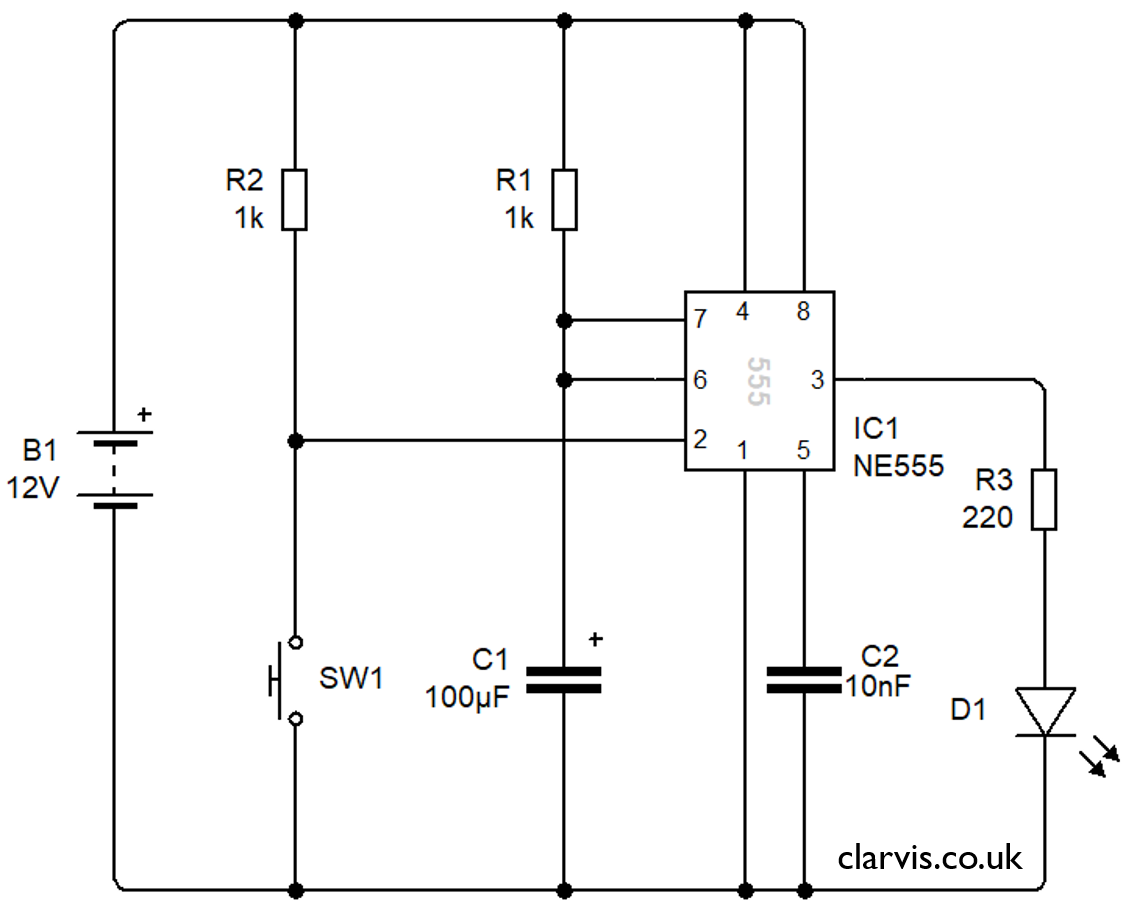The 555 timer integrated circuit (IC) was first released in 1972 by the American company Signetics. The IC contains 25 transistors, 15 resistors and 2 diodes and is used in a range of applications.
Despite being 50 years old it is still alive used to this day.
It has three different modes which are determined by how the external components are configured:
Astable mode - creates a train of pulses
Bistable mode - a latch
Monostable mode - creates a pulse of specific duration

555 Circuit Symbol

555 Pin Layout
A 555 connected as shown here will cause the output voltage to contiuously rise and fall at a frequency determined by the formula:

Where f is the frequency measured in Hertz and R1, R2 and C1 are the components on the diagram.
As well as being able to set the frequency of the output, the duty cycle can also be set. The duty cycle is the ratio of time the output is on compared to the amount of time the output is off.


Example astable circuit
A monostable circuit turns an output on for a specific amount of time once it has been triggered. In the circuit shown, the monostable is triggered by a low pulse on its trigger input (pin 2). This is achieved by pressing the switch (SW1) which pulls the voltage down from 12V to 0V.
Once triggered the output turns on, and the LED lights. C1 charges up via R1 until a threshold has been reached where the output is switched off again.
The time period that the output is turned on (in seconds) can be calculated using the formula:

In the circuit shown R is the value of R1 and C is the value of C1. C2 is required for stable operation and does not affect the time period.

Example monostable circuit
A bistable has two output conditions: on and off.
If the SET switch is pressed (SW1) the output will switch on and the LED will light. When the switch is released the output remains latched in the on condition.
If the RESET switch is pressed (SW2) the output will switch off and the LED will be extinguished. When the switch is released the output remains latched in the off condition.
A bistable can be considered to be a simple electronic memory, because it remembers the previous input state.

An example bistable circuit
An electronic engineer with the name of Forest M. Mimms 3rd designed this circuit which produces all sorts of mad sounds. It is built around an NE556, which is an IC that contains two NE555 timers.
Rotating the potentiometers causes changes in the sounds produced. It has no particular purpose, but it is interesting to build and lark about with.
There are all sorts of ways of building it but below is a design using stripboard.

